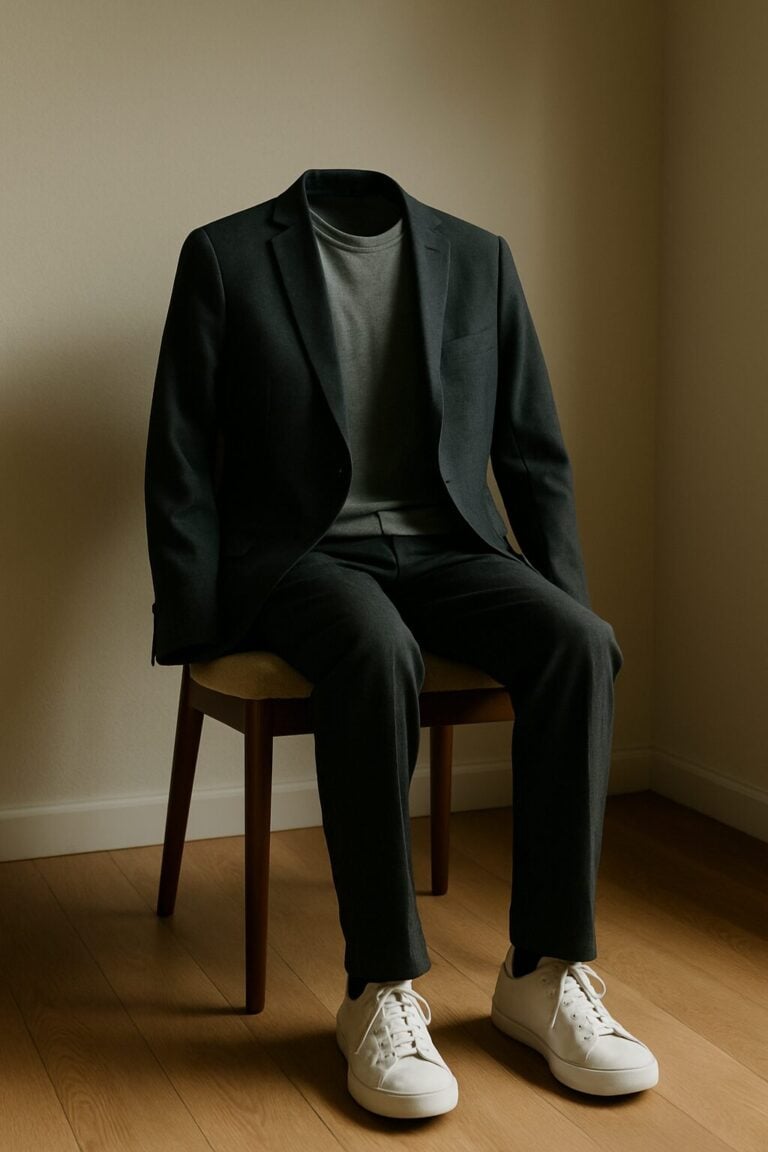Dear Dr. K,
My wife is always angry at me. I can’t talk to her without her getting angry. My wife says I don’t listen to her, but I do. She always tells people “my husband doesn’t help me with anything” but that is so unfair to say. I work a lot, but when I’m home I try to do what I can. Now she’s stopped talking to me. What can I do? -Husband in Hell
Dear Husband in Hell.
Your wife’s anger has a pattern (that science can explain). Men are often completely baffled by women’s anger. “She’s sleeping in the guest room again. I don’t know what I did this time. It’s like living with a ticking bomb,” they’ll tell me. Women find statements like that so unbelievable they think that the men are simply lying. Or dense. Or both.
I’ve counseled hundreds of couples, and I see this pattern. Husbands seem clueless. Women are furious. They can’t imagine how they could be more clear about what they want and that it’s not happening. What most struggling husbands don’t realize is that female anger follows distinct patterns throughout women’s lives—patterns backed by compelling research that rarely makes it into typical marriage advice.
The truth? Your wife’s anger isn’t random. It’s not character assassination. It’s a complex emotional response shaped by biology, psychology, social conditioning, and—as Antonio González-Prendes’s powerful research reveals—her current life stage.
The Age Factor: Why Women’s Anger Peaks in Middle Age
One of the most surprising findings from recent research is that women’s anger doesn’t follow the path you might expect. Dr. A. Antonio González-Prendes and colleagues1 found that women in their 30s and 40s consistently showed higher levels of anger than both younger women (18-30) and older women (50+).
This middle group scored significantly higher on:
- Angry temperament
- State anger (current angry feelings)
- Outward expression of anger
- Lower scores on anger control
What’s happening to women during these middle years that makes them angrier?
They’re often caught in what sociologists call “the pressure cooker years”—simultaneously building careers, raising children, managing households, and possibly caring for aging parents. All while society expects them to make it look effortless.
As one 42-year-old participant in a landmark study2 by Sandra Thomas explained: “I felt like my weekends were spent cleaning the house while his weekends were spent playing, and I resent that… He knows I do most of it and he likes it that way and he wants to keep it that way.” That’s deep inequity and emotional labor.
The Powerlessness Paradox: The True Root of Women’s Anger
Sandra Thomas’s extensive research revealed a critical insight: powerlessness drives over two-thirds of women’s anger. This isn’t abstract philosophical powerlessness—it’s practical, everyday powerlessness.
Women in Thomas’s studies consistently described three primary anger triggers:
- Power inequities – Being unable to effect change or have their voice heard
- Injustice – Being treated unfairly or witnessing unfair treatment
- Irresponsibility of others – Expecting others to meet commitments and being let down
When your wife says, “You never listen to me,” she’s not just launching a complaint—she’s expressing a profound sense of powerlessness in the relationship that research shows is the primary driver of feminine rage.
Female Anger Expression: The Science of How Women Process Rage
Thomas’s research uncovered something fascinating about how women process anger—something most marriage advice completely misses.
For women, anger is rarely a “pure” emotion. Instead, it comes mixed with hurt, disappointment, and fear. When participants in Thomas’s studies were asked to talk about anger, they often struggled to disentangle it from these other emotions.
Social myths tell us that women don’t know when they are angry, or that women’s anger is always pathological, hysterical or irrational. ” While anger and hurt are often intertwined, women are aware that they are angry. They have just been conditioned to minimize or ignore it, especially when it comes to their male intimates.
This emotional complexity creates four distinct anger expression patterns in women:
1. The Stewer: Anger Turned Inward
Many women suppress anger, turning it inward where it simmers like an undercurrent. Thomas’s participants used cooking metaphors to describe this internal agitation—anger was “simmering,” “stewing,” sometimes coming to a “slow boil.”
One woman described: “I’m feeling this raw emotion and I’m mad as hell. I feel the anger into the depth of my soul. I grit my teeth or hold my jaw really tight and I just hold back all the tears that I can… I wake up sore all over my body from holding myself so rigid.”
This physical holding of anger creates the somatic symptoms many women experience—tension headaches, jaw pain, digestive issues, and disturbed sleep.
2. The Volcano: The Jekyll and Hyde Response
When suppressed anger finally erupts, women often describe feeling possessed by a foreign entity. As one participant told Thomas: “My husband tells me I’m like Jekyll and Hyde. I can just be talking real sweet, normal tone of voice, and then I’ll explode… I’ll get squealy, get this distorted look on my face of pure hate… I don’t know that I’m doing it. It’s kind of like I’ve just gone into somebody else.”
These eruptions typically occur after a long period of suppression, when the internal pressure becomes too great. The woman herself is often shocked by her own behavior.
3. The Leaker: Indirect Anger Expression
Some women described “storing” anger until “it just rolls up into a big ball and you’re not even sure what it’s really about.” This stored anger leaks out through indirect behaviors: slamming cabinets, silent treatment, sarcasm, or “being picky, picky.”
Many women in Thomas’s studies admitted learning these passive-aggressive tactics from their mothers: “I’m real good at passive-aggressive. I’m really good at pouting. And the quiet treatment. I’m good at that. I learned that well from my mother.”
4. The Constructive Expresser: Healthy Anger Integration
Thomas identified the least common but healthiest pattern as women who could express anger directly and constructively, using it to restore justice, respect, and relationship reciprocity.
One woman described the liberation of finally expressing anger effectively: “I can’t describe the feeling of joy, accomplishment, relief… I expressed anger and the world as I knew it didn’t end… That was the beginning of my recovery of myself as a whole person.”
“If you’re navigating this kind of emotional complexity in your relationship, Sierra Keheo’s couples retreat in Ashville, NC offers space to name it—and heal from it.”
The Anger-Self Complex: Why Your Wife’s Rage Runs Deep
Thomas identified what she calls the “anger-self complex”—a profound internal conflict many women experience about their right to feel and express anger at all.
Unlike men, who are generally socialized to see anger as acceptable, women often feel shame about being angry. This creates a double bind: they feel angry, then feel ashamed for feeling angry.
As one study participant explained: “I believe that I have been socialized to not acknowledge anger as a valid human emotion. The result of this socialization is that I have not always known when I am angry nor do I have many effective ways of expressing anger. I often feel powerless when I am angry. I feel hopeless. I feel foolish. I feel afraid. Feeling angry can scare me.”
This conflict explains why your wife’s anger might seem disproportionate—she’s expressing not just current frustration, but years of accumulated resentment she didn’t feel entitled to voice.
Cultural Dimensions: The Impact of Background on Anger Expression
Research by González-Prendes reveals another crucial dimension—cultural differences in how women express anger. While Thomas’s work focused primarily on white American women, studies with African American, French, and Turkish women show interesting variations.
African American women, for instance, showed greater acceptance of anger’s positive functions. Having learned from mothers and grandmothers that they must protect themselves to survive in a racist world, they were more likely to express anger directly. As one woman said, “My grandmother always said, ‘Take something and make it work for you.’ So when I have anger I use it.”
Turkish women reported higher anger proneness, greater perceived stress, greater depression, and more somatic anger symptoms than American women. Researchers suggested this might relate to greater societal oppression of women in Turkish society.
These cultural differences demonstrate that anger expression isn’t just individual psychology—it’s shaped by societal expectations and cultural context.
The Vicarious Stress Phenomenon: A Uniquely Female Burden
One of Thomas’s most fascinating discoveries was the concept of “vicarious stress”—emotional burdens women carry not from their own lives, but from the lives of those they love.
When asked about their greatest life stressors, women in Thomas’s studies rarely mentioned the typical life events measured by standard stress instruments. Instead, they described stresses in the lives of their circle of intimate connections—a son’s divorce, a grandson’s illness, an aging parent’s mental decline.
Women absorb these stresses as their own, creating a multiplier effect of emotional burden. When husbands fail to acknowledge this invisible emotional labor, women’s anger intensifies.
Practical Strategies Based on Research, Not Platitudes
Armed with this research, how can you effectively respond to your wife’s anger patterns? Here are evidence-based approaches that go beyond the usual “just listen better” advice:
1. Recognize Age-Specific Anger Triggers
If your wife is in her 30s or 40s, understand she’s in the statistically angriest period of female life. This isn’t personal—it’s demographic. Acknowledge the unique pressures of this life stage and look for practical ways to alleviate her burden.
Try saying: “I know you’re juggling more than I probably even see right now. What could I take completely off your plate—not just help with, but take full responsibility for?”
2. Address the Powerlessness-Anger Connection
Remember that two-thirds of women’s anger stems from feeling powerless. Look for areas where your wife lacks agency or influence and deliberately create space for her voice.
Instead of asking “Why are you so angry?” ask “Where in your life do you feel like you’re not being heard or can’t effect change?”
3. Create Safe Space for Anger Expression
Women who participated in Thomas’s research reported rarely having female role models who demonstrated healthy, constructive uses of anger. Many had mothers who suppressed anger or expressed it through passive-aggressive behavior.
Be the partner who breaks this cycle. Shut off the TV, put down the newspaper or magazine, move your body to face hers, look directly into her eyes, and breathe. Explicitly tell your wife that her anger is welcome, then prove it by not becoming defensive when she expresses it.
4. Understand the Physical Cost of Anger Suppression
Thomas’s research shows that women who chronically suppress anger experience significant physical symptoms—from tension headaches to hypertension. When your wife expresses anger, recognize she’s protecting her health.
Research shows that women who regularly discuss their anger with a confidant have lower blood pressure, lower body mass index, better general health, and greater self-efficacy and optimism.
5. Navigate the Different Anger Styles
Based on Thomas’s research and the typology I outlined, different responses work better for different anger styles:
- For Stewers: Create regular check-ins before pressure builds. Ask specifically about frustrations, not just feelings in general.
- For Volcanoes: When eruptions happen, avoid dismissing them as “crazy.” Say: “I can see you’ve been holding this in for a while. What do you need right now?”
- For Leakers: Name the pattern without accusation: “I notice when you’re upset, you tend to go quiet. Would it help to talk directly about what’s bothering you?”
- For Constructive Expressers: Reinforce this healthy pattern by thanking her for direct communication.
When the Talking Stops: The Dangerous Silence
Perhaps the most alarming finding from Thomas’s research concerns women who have stopped expressing anger altogether.
As one wife explained: “We [women] want peace more than we want to actually express our anger and have somebody have to deal with it. Because then we have to deal with it too.”
When a wife stops talking, it’s rarely because she’s content. According to Michele Weiner Davis, women are typically the “keepers” of relationships—they monitor relationship health and speak up when things aren’t going well. If they stop speaking up, it’s often because:
- They believe it’s pointless to complain to someone who doesn’t listen
- They’re acting out their discontent passive-aggressively
- They’ve become a “walk-away wife” and divorce papers are imminent
If your wife has stopped expressing frustration entirely, consider it a red flag requiring immediate attention.
Cross-Cultural Insights: Lessons from Different Societies
Fascinating cross-cultural research shows that in societies with higher social status for women, women report greater freedom to express anger. This pattern appears across 37 different countries studied.4
What can you learn from this in your marriage? Create a household culture where your wife’s status equals yours—where her time, preferences, and contributions receive equal weight and consideration.
Professional Support: When to Seek Help
Thomas’s research indicates that some women benefit from group work that allows them to reflect on gender role socialization and practice new anger management skills. For others, individual therapy may help them sort through stored anger.
If your wife’s anger seems persistent and intense, or if it’s driving serious relationship problems, suggest professional support without implying there’s something “wrong” with her.
Say: “I’ve been reading about how complex anger can be, especially for women. I wonder if talking with someone might help us both understand what’s happening between us?” Be prepared to be shocked. For many women who believe that their husbands don’t care about them or their marriage, suggesting couples therapy says more than a bouquet of flowers ever could. It says, “I’m in this with you. Let’s work on ‘us.'”
A Final Word: The Paradox of Female Anger
Thomas’s research revealed a fascinating paradox: women retain a sense of powerlessness whether they suppress their anger or express it in a volcanic outburst. Neither extreme leads to the change they seek.
The healthiest path forward is learning to express anger directly and constructively—using it as information that something needs to change, not as a weapon or a last resort.
For husbands, the most loving response is creating an environment where this healthy expression feels safe and leads to real change.
As one woman in Thomas’s research said after finally expressing anger effectively: “That was the beginning of my recovery of myself as a whole person.”
That wholeness—for both of you—is the real goal, far beyond simply “handling” an angry wife.
References
1. González-Prendes, A., Praill N. & Kernsmith, P. (2013). Age Differences in Women’s Anger Experience and Expression. International Journal of Psychological Studies; Vol. 5, No. 3
2. Thomas, S. (2005). Women’s Anger, Aggression, and Violence. Health care for women international. 26. 504-22. 10.1080/07399330590962636.
3. Thomas, S. P. (1995). Women’s anger: Causes, manifestations, and correlations. In C.D. Spielberger & I. G. Sarason (Eds.) Stress and emotions, (vol.15, pp. 53-74). Washington, DC: Taylor & Francis.
4. Fischer, A. H., Rodriguez Mosquera, P. M., van Vianen, A. E., & Manstead, A. S. (2004). Gender and cultural differences in emotions. Emotion, 4, 87094.







